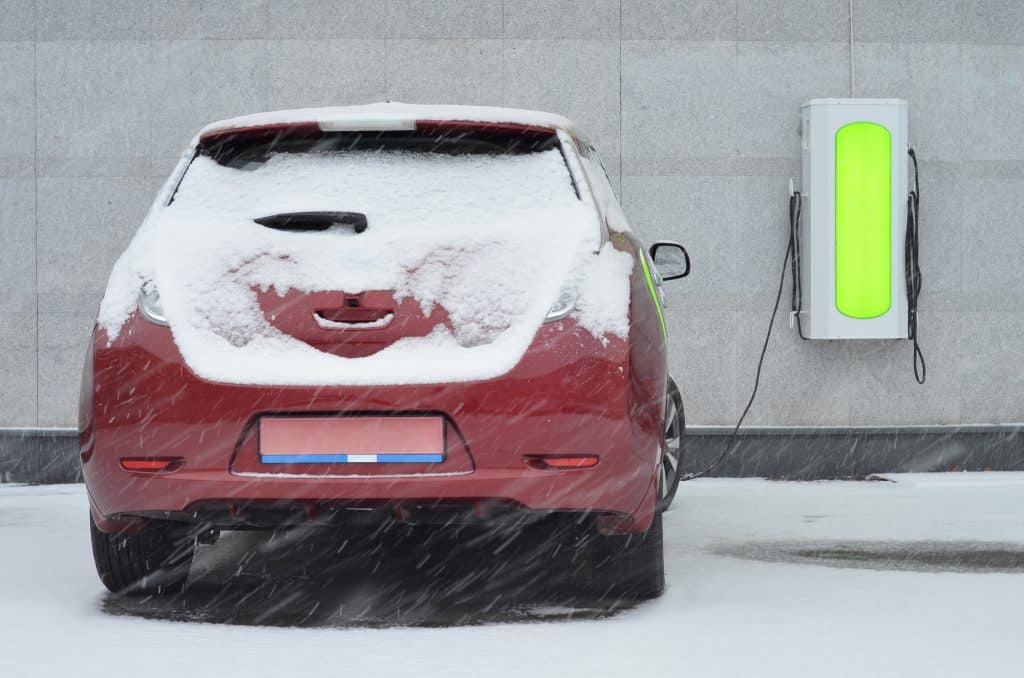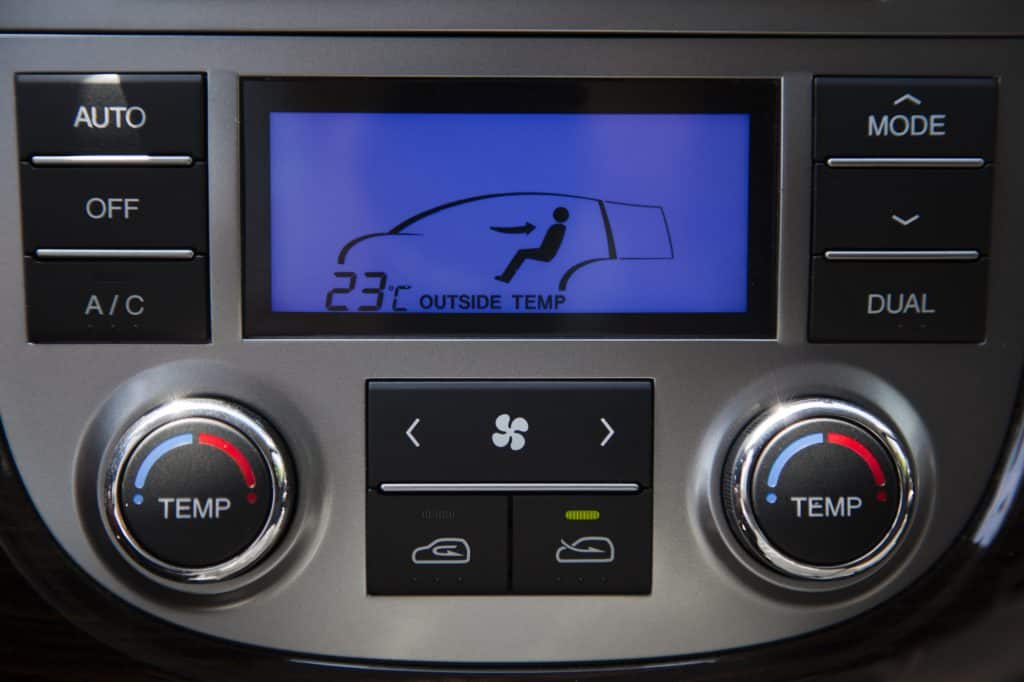In today’s piece, we’re exploring the world of electric car heaters and their efficacy. In particular, we’ll be looking into the seemingly conflicting issue of reduced battery performance in cold weather versus the increased need for in-car heating in these conditions. Before starting with some key background info, the short answer here is…
Using heaters on electric cars can cause range to drop by 20-30%, however the use of effective heat pumps is starting to solve this problem and deliver warmer cabins for less range penalty.
Background
An increasing number of people around the world are expressing a strong interest in getting electric cars for their families. The are seen as the alternative vehicle choice that could really make a difference in improving our global environment, reducing our overall greenhouse gas emissions, and preventing catastrophic climate change from taking hold and potentially displacing and killing millions of people around the world.
These sound like lofty ambitions to be achieved by a Nissan Leaf or a Tesla Model 3, but it’s no exaggeration. According to data published by the EPA back in 2018, about 28.2 percent of all U.S. greenhouse gas emissions can trace their source back to transportation. That means that our cars — along with other vehicles — are the single largest contributor of greenhouse gas emissions.
The Cold Climate Problem

As we said, many around the world are expressing their willingness to do their bit and make the switch to electric cars, but there’s a problem for some. Those who live in exceptionally cold climates, or temperate zones where the winters get very cold — and that’s a great deal of people, as it happens — are faced with a particular challenge of cold weather vs. EV batteries.
In fairness, both electric and gasoline cars have their ranges impacted by the cold weather, We can’t escape the fact, however, that lithium-ion batteries are very sensitive to temperature and already come with an inherently shorter drive range than gasoline systems do, which worsens the problem. Have you ever noticed that your smartphone can experience problems when being used outdoors in the cold weather? Though the li-ion battery pack of your electric car is quite a lot larger and more powerful than your smartphone battery, the principles it runs on are very much the same.
The problem is this: the colder the outside temperature, the harder for the electric car battery to output the power it needs for the systems in the car, and this includes heating, which in an electric car relies massively on the power output of that battery pack. In the owner’s manual of the Tesla Model S, you’ll find a stark warning: “In cold weather, some of the stored energy in the Battery may not be available on your drive because the battery is too cold.” When you’re driving, this is usually indicated by a snowflake symbol on the dash display.
Right When We Need It Most
So, when it comes to answering the core question of today’s article about the effectiveness of car’s heating systems, we run into a snag. Just as we need the car to be outputting as much power as it can to support better heating for the driver and passengers, the battery is actually increasingly restricted in its power output. How do we get around this?
Ultimately, the solution to this problem will be solid-state batteries that don’t rely on internal fluids to operate. It is these fluids that are the Achilles’ heel of many modern lithium-ion batteries today. The technology for this, however, is still some years away so for the time being we have to continue working with what we have.
How do EV heating systems work?
In a gasoline car, the heating system works by taking warmth from the engine radiator and exchanging it via the heating core. As the engine runs, the process continues and the result is a nice warm and toasty cabin within a few minutes of starting up the engine. As long as you have gasoline in the tank and you can therefore keep the engine running, then you can warm up the passenger cabin, too.
On an EV, because there is no mechanical engine from which to get that initial blast of warmth, it has work differently. In an ironic twist, despite being presented and thought of as infinitely more advanced than gasoline cars, many electric car heating systems run on a much more primitive — ‘tried and tested” if we are being kind — system of resistance heaters. It’s not exactly high-tech, but it gets the job done.
The problem is that generating heat in this way requires great amounts of electrical energy, and as we just explained, right at the times you will need that burst of energy is also a time that your battery power is being constricted by the cold conditions.
An alternative to resistance heating is the use of heat pumps. These are far more efficient than the other style, but are far more expensive to install and thus add greater cost to an already more expensive vehicle. It’s no wonder so many in colder climates are resisting the switch to all-electric. Many are waiting for such problems to be solved before they take the plunge and go all in.
How do EV heat pumps work?

The heat pump system in your electric vehicle, assuming you have one, works in a very similar fashion to that of a refrigerator compressor unit. The main difference is the direction in which they operate. Both units work by moving warm air from one place to another. The refrigerator takes warm air and pumps it out of the refrigerator and into its surroundings. The heat pump on your electric car takes warm air generated in the system and pumps it into the cabin to warm you and your passengers.
In addition, the heat pump system creates this heat by using much less power than the resistance heating system because it can get the heating effect by using the temperature difference between the refrigerant and the outside air. Therefore, it doesn’t rely solely on generating heat from the electric battery. Some estimates place the difference in power requirements at as much as 50 percent lower in a heat pump system when compared to an electronic resistance heating method.
Which brands are using heat pump technology?
Two stand-out brands in the world of EV heating are Hyundai and Kia. The technology they are using was tested in 2020 in frigid wintry conditions up in Norway. During the test, the Hyundai Kona received top grades for its ability to retain range even in the freezing sub-zero conditions. The main reason for this success was its ultra-high-efficiency heat pump technology, which is shared on the Kia platform and perhaps best exhibited in the Kia Soul EV.
Hyundai released news about the test back in July of this year, and included a segment from the designers of the system, Cho Wan-Jae, Kim Jae-Yeon and Park Nam-Ho. They explained that this heat pump system works similarly to an a/c system, with the refrigerant undergoing compression and condensing to raise its temperature. The heat is then released into the vehicle. The system even works by making use of waste heat from the car’s electrical components that would otherwise go unused. This waste heat is used to help compress the refrigerant.
The results are clear. A Hyundai Ionic Electric with a 38.33kWh battery will go from its standard 277km range in regular temperatures down to 211km in deep winter. That’s a range retention of 76 percent (i.e. only a 24% drop).
By comparison, a Nissan Leaf with a 40.25kWh battery will only retain 67 percent of its range, and a BMW i30 120Ah with a 42.36kWh battery will only retain 64 percent.
| EV | Range Retention | Range Drop |
| Hyundai Ionic Electric (heat pump) | 76% | 24% |
| Nissan Leaf (resistance heater) | 67% | 33% |
| BMW i3(resistance heater) | 64% | 36% |
Using heat pumps has no become something of an industry standard. Tesla, Nissan, BMW, VW, as well as aforementioned Korean giants Hyundai and Kia all now make use of this system.
Conclusion: How Well do Electric Car Heaters Work?
Like just about every other kind of technology in electric cars, there were challenges to be met at the beginning. Just as the lithium-ion batteries are being improved constantly to boost their range and efficiency, so too must other systems be enhanced and improved to create a driver experience that is both enjoyable, but also enough to assuage the many anxieties people have with electric cars.
Today, it might be Hyundai who is leading the pack in efficient and effective heat pump technology, but tomorrow another maker could revolutionize the technology and come up with a solution that makes EVs the preferable option in winter weather. In the meantime, they seem to be closing the gap pretty quickly!
5 comments
I believe home heat pumps are not more efficient than resistance heating when temps are in the 30s. True for EV heat pumps?
Good question. I don’t know 100%, to be honest, but there’s certainly been some criticism of EV heat pumps (including from Tesla owners during this recent cold spell). However overall it does sound like EVs are better with heat pumps than without.
My Home heat pump does run longer between heating cycles as the temperatures drop. I usually switch to resistance heating when it’s 25 degrees or lower, outside. Some newer home heat pumps automatically switch over for peak performance. EVs could do the same, or even use both at the same time, adding heat to what the pump is putting out.
[…] the colder the outside temperature, the faster lithium ion batteries lose power. According to Green Car Future, a pro-EV website, the Tesla Model S owner’s manual comes with this warning: ‘In cold weather, […]
[…] the colder the skin temperature, the quicker lithium ion batteries lose energy. In line with Inexperienced Automotive Future, a pro-EV web site, the Tesla Mannequin S proprietor’s guide comes with this warning: ‘In […]